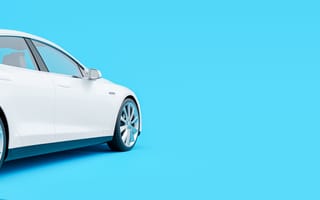Electric. Autonomous. Connected.
These are a few of the trends shaping the global automotive industry, according to a report from PwC.
For the team at Magna International, these trends aren’t merely current fads — they define the company’s burgeoning product suite. As one of the world’s largest automotive suppliers, the organization has been embracing the latest technologies for decades in an effort to shape the future of transportation.
“Magna’s mission is to advance mobility for everyone and everything,” said Shaun Hintz, global product technical director. “When we create solutions that bring mobility to all, we reduce opportunity gaps between individuals and communities.”
In addition to powerful engineering, the company leverages innovative frameworks to drive progress. That’s where Hintz and her teammates come in. They’re tasked with bringing the company’s bold ideas to life through sophisticated UX design.
Hintz said this work is grounded in a deep understanding of customers’ needs. Once she and her peers know what consumers desire out of their products, they collaborate with various departments to develop innovative solutions.
According to Hintz, these solutions are intended to accomplish a common aim: reduce complexity for the company’s customers, enhance safety and protect the environment.
Built In Boston caught up with Hintz to learn about her team’s approach to UX design and how their work is driving the company’s efforts to reimagine the mobility space.
Describe a project you’re working on right now. What impact will it have on your customers?
One of the projects my team is working on relates to total system development of the vehicle to improve the driving range of EVs as well as safety improvements relating to autonomous driving. Our teams work together to provide solutions, such as this one, that reduce complexity at our customers’ facilities and provide safer mobility options while improving the environment and reducing traffic fatalities.
Our teams work together to provide solutions that reduce complexity at our customers’ facilities and provide safer mobility options while improving the environment and reducing traffic fatalities.”
How do you determine what people really want out of a possible product?
We have teams that work on understanding our customers’ needs before sending these inputs to our development teams for consideration. These input channels are then sourced through market trends and data analytics, consumer clinics and feedback, customer requests and ideas from our employees. Our industrial, engineering and commercial design teams collaborate with our marketing department and leverage industry trend analysis to develop solutions.
How do you design for products with long timelines and large capital investment requirements?
The traditional transportation cycle can last between five to 10 years with high-value capital investment. Our teams transition between working from napkin sketches to detailed computer modeling in the first one to two years before tackling tooling and industrialization the following year. Our products are typically manufactured for three to seven years before the next generation is launched again.
Our teams focus on customer needs and cost-avoidance strategies to ensure we provide the right products at the right price to the market. Everyone works to utilize the investment costs toward the highest value to the end customer. We typically use prototyping methods to analyze the functions and collaborate on best practices prior to the final investment kick-offs. The teams will use these methods on every aspect of the process, from design appearance and functional durability to industrialized layouts.







